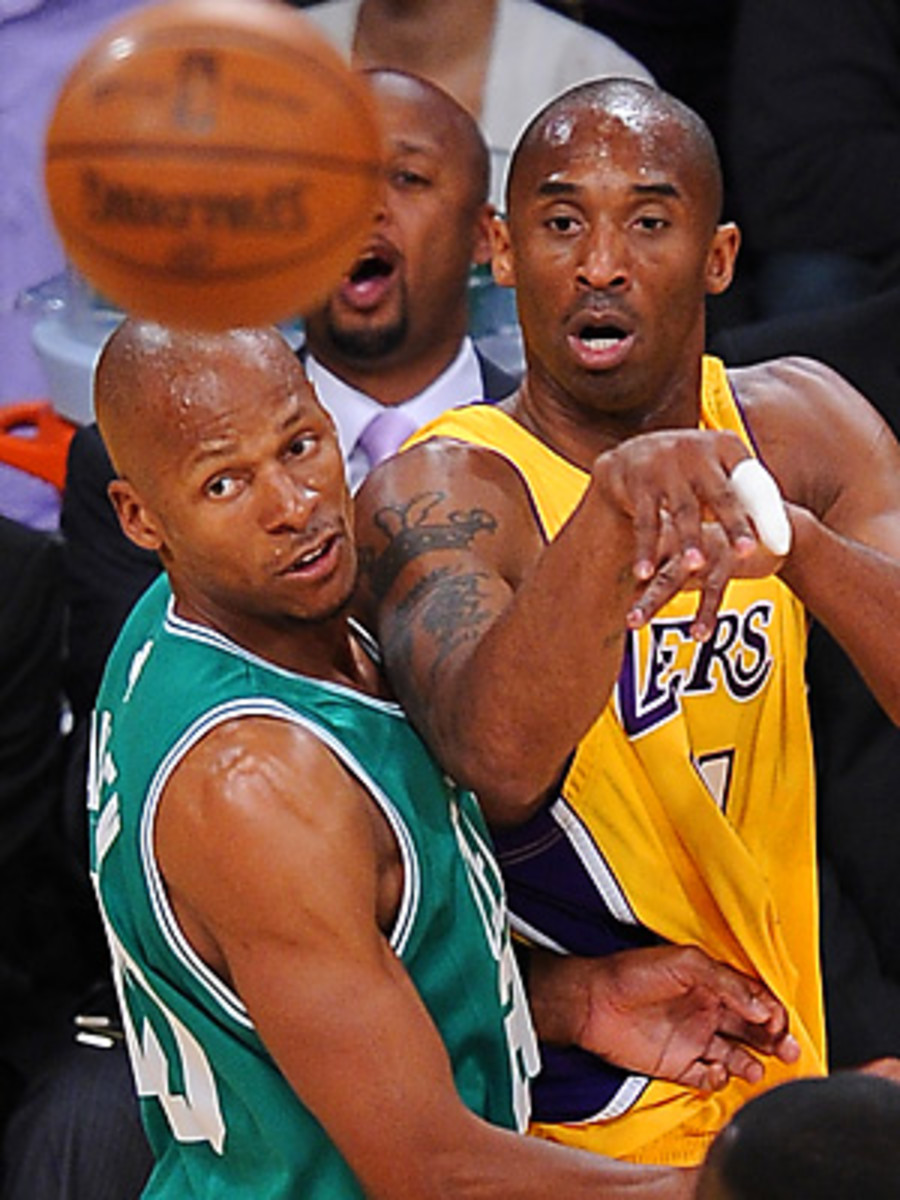How Kobe has evolved and why it makes the Lakers more dangerous
Rather, to listen to the Lakers coaching staff, it was one of the most basic acts in basketball: a two-handed chest pass (or bounce pass, or skip pass) to a teammate on the wing (or at the high post, or in the lane). Most every time -- for it was repeated, and regularly -- the pass did not lead to an assist, was not spectacular in the way that makes young boys want to purchase glossy sneakers and could have been made, in many cases, by just about any able-bodied athlete. In other words, it was the opposite of Kobe Bryant's essence: mundane.
And yet it was Bryant's swing passes that allowed the Lakers to create seams against the Celtics defense and keep Boston from keying on him. The L.A. coaches prefer to call them hockey assists -- the pass that leads to the pass that gets an assist, say an entry look to Pau Gasol at the high post, which leads to a dump-down to Andrew Bynum for a dunk. Bryant's willingness to make them may be the biggest difference between Kobe circa 2008, when the Lakers last played the Celtics in the Finals, and today.
"Two years ago, he absolutely refused to move the ball when the double team came," said assistant coach Brian Shaw. "I don't care how great a player you are, if you don't move that ball side to side, there's no way you can beat that team. Watching film, having gone through that experience [in 2008], he now realizes when they send two people early, it leaves 4-on-3 basically on the other side. Which means if he gives the ball up, it will find its way back to him."
The problem has always been, as Shaw says, that, "Kobe wants to put his imprint on the game, every facet of it." Two years ago, this meant trying to single-handedly overcome the Celtics' defense. Now, at least in Game 1, though Boston played essentially the same defensive scheme as it did in 2008 -- trapping early, loading one side, essentially playing a zone for large parts of each possession -- Bryant was far more effective. His numbers weren't that dissimilar -- he had six assists and four turnovers in Game 1 in 2008 and also in Game 1 in 2010 -- but the quality of the shots he took was much higher, a direct result of being more patient and moving the ball. Phil Jackson describes it as, "Now he's capable of making the play that makes the play," and Shaw cites it as a key part of Bryant's evolution. "He still doesn't do it enough, in our opinion," says Shaw. "But he's doing it more, and seeing the results."
Bryant shrugs off the new approach as just taking what the defense gives, saying, "It's really me trying to find gaps and holes in their defensive scheme." Likewise, when I asked Ray Allen if Kobe has become a more willing passer, and if that is affecting Boston's defense, Allen wisely opted not to comment on Bryant, lest he provide fuel for the fire. Instead, he chose to make a comparison to the other teams the Celtics have faced this postseason. "LeBron passes the ball pretty well and Orlando really puts pressure on you because they have great three-point shooters, so we had great practice coming into this series," says Allen. " I don't think the Lakers did anything we didn't expect them to."
In other words, in basketball terms, this is nothing special. Then again, part of the reason that Shaw and Jackson harp on this point so much is because they know that for Bryant, at least, it is. It also goes hand-in-hand with another change in Bryant: Even when he does go into jaw-jutting killer mode now -- a transformation Jackson chalks up to "Kobe can't live with not competing at the top level" -- he is more willing to take his teammates with him.
Never a natural leader, Bryant has found a middle ground between cheerleader and a demanding boss that appears to work. Shaw points to an example in Game 1, when Ron Artest drew a foul on a questionable call. Disbelieving, Artest stood near the Laker sideline, staring at the ref and working his face up into a prodigious grimace. Before, says Shaw, "Kobe may have just looked the other way and walked away." But on Thursday night Bryant ran over, clapping and smiling toward Artest, shouting, "It's OK, let's play." "Ron was about to go off and Kobe completely disarmed him," says Shaw. "Instead of him maybe getting a technical, he embraced the support that Kobe was giving him at that moment."
Kobe Bryant: The Big Affirmer. Yes, it sounds strange, but Shaw says Bryant now has an ability to, "make his teammates feel almost invincible out there on the floor." "He now criticizes them in a constructive way when he needs to but also praises them when they do well and, that's the area where he's grown."
Granted, with Bryant it's all relative. After all, this is a guy who, when Andrew Bynum was playing lackadaisically in Game 3 of last year's Finals, famously tore into him, saying "Get your head in the f--king game!".
Still, when I asked a handful of Lakers players about how constructive Bryant's critiques have become, they all found diplomatic ways of praising Kobe's desire. As Jordan Farmar put it: "Everything he does is with the intent to help us come along with him to win a ring."
And that's a nice way to put it: come along with him. For that is what Bryant has long since realized, and what makes these Lakers so dangerous: He can't do it alone.





